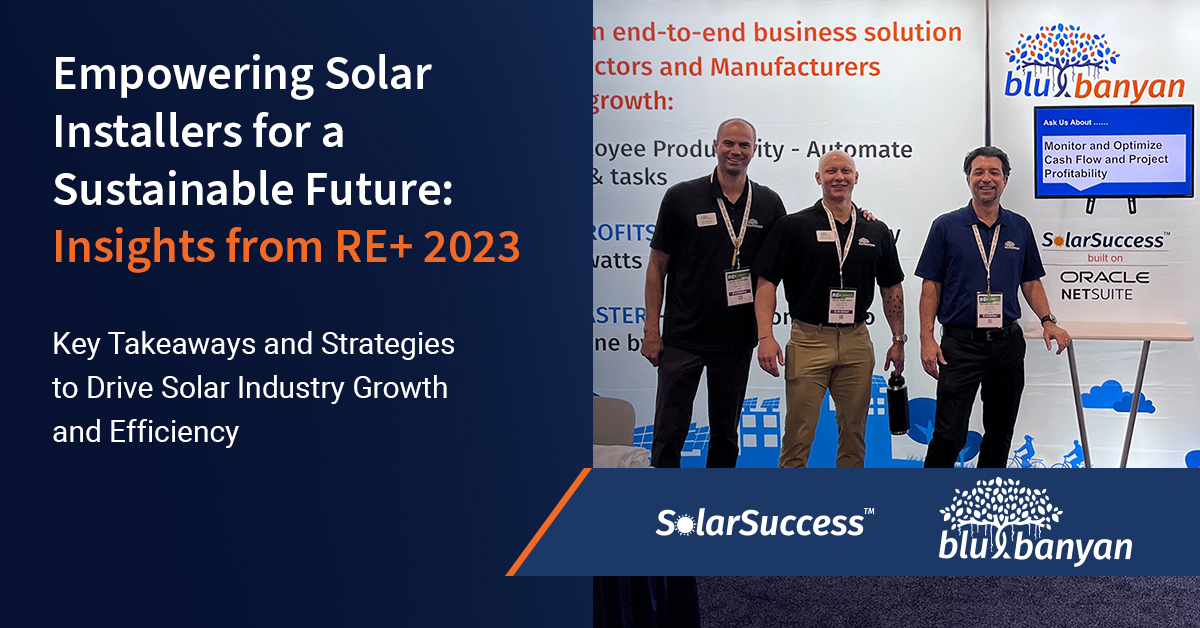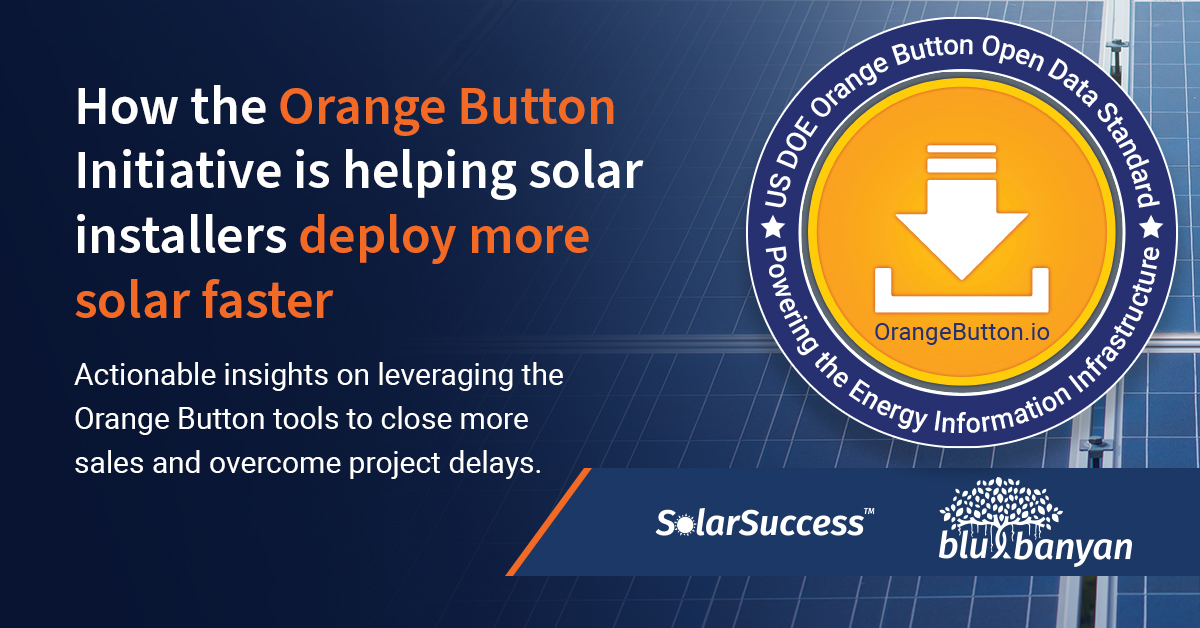Effective project management is paramount in the solar installation industry as it’s pivotal in ensuring solar energy projects’ successful development, deployment, and maintenance. As the industry grows and accelerates, project management becomes critical for optimizing investments, minimizing risks, and ensuring the long-term sustainability of your projects.
Meticulous planning, resource allocation, quality control, and adherence to strict timelines ultimately contribute to your business’s bottom line.
Certainly, solar installers face several challenges that can be tackled with solid project management:
- Budget constraints: Project management can help you control costs by tracking expenses and optimizing resource allocation, ensuring projects remain within budget.
- Timeline pressures: Careful scheduling and contingency planning can help meet project deadlines when unexpected setbacks arise.
- Quality Assurance: Maintaining quality standards and ensuring installations are correctly done the first time can be achieved through effective quality control and project oversight.
- Scaling operations: As the demand for solar installations grows, effective project management is essential for scaling up operations and managing multiple projects concurrently.
Blu Banyan’s SolarSuccess Project Management Excellence gives you three next-level tools to boost your ability to overcome these challenges.
1. Enhanced Scheduler: Streamlining Your Solar Project Scheduling

A project management scheduling tool is the linchpin of efficient project planning and execution. The Enhanced Scheduler provides a user-friendly platform for creating, tracking, and managing schedules. It allows your teams to visualize tasks and allocate resources enabling everyone to stay on the same page and meet project deadlines.
Time Savings
Optimize your schedule to save time by reducing manual planning and rescheduling. What’s more, the Enhanced Scheduler gives you a centralized interface, allowing you to view and manage multiple projects at a time. No more switching between browser tabs with projects open on each. Rescheduling is as easy as dragging and dropping calendar tiles, and project and project action records are a click away.
Scalability
As your business grows, it becomes necessary to have scheduling solutions that scale up to meet increasing demands without reducing efficiency. Whether you’re managing four projects per month or 40, the Enhanced Scheduler grows with your business and helps you keep everything on track.
Improved Customer Service
The Enhanced Scheduler assists in improving customer service by enabling you to promptly meet your client needs, ensuring consistent communication, and providing real-time project updates. The result? Improved customer satisfaction and loyalty, ultimately contributing to your business’s growth and success.
Multi-location Scheduling
Seamlessly manage schedules across multiple locations or branches, ensuring consistency and alignment. This flexibility enables you to manage your schedules more efficiently, saving time and improving overall productivity.
Moreover, the Enhanced Scheduler lets you customize your scheduling view to focus on what’s most important to you. Choose from monthly, weekly, or daily views for the scheduling perspective that suits your needs.
2. Project Action Management: Taming the Complexity of Multiple Projects

Project Actions in SolarSuccess are powerful built-in tools that automate repetitive project management tasks to reduce errors and streamline workflows. With Project Actions, PMs can easily create customized workflows, automate approvals, and execute complex business processes.
Coupled with Project Management Excellence’s Multi-Project Action Management, project managers and other stakeholders can now use a centralized interface to easily keep tabs on multiple tasks—in multiple projects—at once.
They can filter and sort all projects right from their dashboard, allowing them to regularly update and monitor the statuses of actions in each project. Further, multiple SolarSuccess users can update actions within the same tool, enhancing the system’s already robust collaboration capabilities.
3. Preceding Action Automation: Leveling Up Your Project Management
With Preceding Action automation, PMs can define the sequence of actions required to complete a project and then create rules to trigger subsequent actions automatically. This ensures tasks finish in the correct order and notifies team members when their input is required.
Preceding Action automation also provides visibility into project progress, enabling project managers to identify potential bottlenecks and take corrective action promptly. Automating routine tasks enhances efficiency, reduces errors, and ensures that projects are completed on time and within budget.
Efficient Workflow
Instead of manually tracking and identifying completed preceding tasks, the automation system automatically detects them and initiates the subsequent tasks. This reduces delays and improves overall workflow efficiency by minimizing errors caused by manual tracking.
Real-time Updates
The automation system constantly monitors all preceding tasks and initiates dependent tasks once all necessary prerequisites have been met. This ensures that tasks are executed in a timely and organized fashion, with continuous monitoring of all task dependencies, ultimately resulting in more effective and efficient task execution.
Reduced Human Error
Automation eliminates the risk of human error in identifying completed preceding tasks, ensuring accurate task sequencing and project timelines. By reducing the likelihood of errors, automation also helps to improve overall efficiency and productivity, allowing teams to focus on more creative and value-adding tasks.
Optimized Prioritization
Multi Preceding Action Automation automatically prioritizes tasks based on readiness, optimizing project execution. By intelligently sequencing tasks, Multi Preceding Action Automation ensures that every project is delivered on time and within budget while minimizing unnecessary delays.
SolarSuccess: The Game-changer for Solar Installers
As a solar installer, your business runs on multiple operations, such as project management, marketing, and sales tracking. However, managing all these operations on spreadsheets takes time and effort that’s better directed toward closing sales and installing solar systems.
With SolarSuccess, you get powerful, next-level tools—like Project Management Excellence—that help you automate your business processes and reduce the risk of errors. It provides real-time analytics and reports that help you make informed business decisions. And by integrating all your business operations—from Sales to Accounting to Project Management—SolarSuccess helps you save time, reduce costs, and increase your profitability.
SolarSuccess gives you a powerful and innovative platform that helps you manage all your business operations from one place. Take advantage of this opportunity and contact Blu Banyan for a demo of SolarSuccess today.













 An electrician benefits from a tremendous number of standards, including what the color wrapping wires means in any house, anywhere. Standards reach into the heart of the daily beat of how an electrician does their work.
An electrician benefits from a tremendous number of standards, including what the color wrapping wires means in any house, anywhere. Standards reach into the heart of the daily beat of how an electrician does their work.


